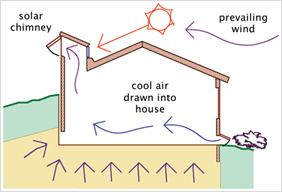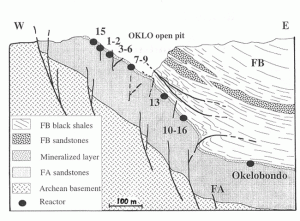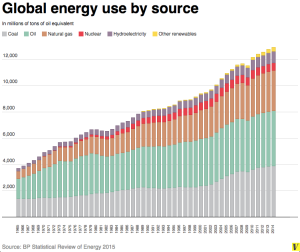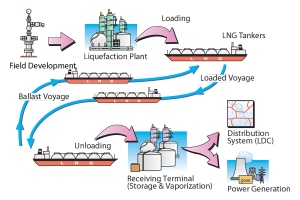Tags
electricity, energy, environment, materials, nuclear, renewables, technology, wind
Check this out!
A large wind turbine and a single nuclear fuel assembly put out the same amount of electricity over their respective lifetimes.
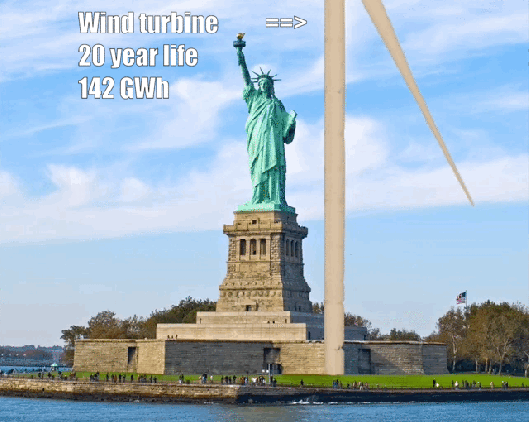
Ok, so why is this so cool? It’s often hard to visualize how much impact our energy system has, so it often comes down to charts. But when two concrete items can be visualized that put out about the same amount of juice, it’s easier. Imagine all the steel that goes into building a giant wind tower taller than the Statue of Liberty and the fiberglass for three blades almost as tall. Now imagine a 4 meter (13 foot) tall fuel assembly, 30cm x 30 cm (1ft x 1ft). Sure, it’s uranium and zirconium instead of steel and fiberglass, but the total weight must be a thousand times smaller! (300 tons vs. 0.4 tons actually.) That roughly translates to a thousand times less mining.
First, let’s calculate the output of a single 2.5 MWe wind turbine. The U.S. Energy Information Agency’s (EIA) 2018 capacity factor for wind is 0.374. That means wind turbines output their rated capacity (e.g., 2.5 MWe) about 37.4% of the time. Wind turbines are designed to last 20 years, and will have a slight decrease in output of 1.57%/year. That gives an average wind turbine a total electricity output of 142 GWh over its lifetime.
Now, let’s look at nuclear energy. Nuclear power plants come in two varieties – roughly 2/3 are Pressurized Water Reactors (PWRs) and 1/3 are Boiling Water Reactors (BWRs). Their fuel looks very similar, but a fuel assembly is how individual fuel rods are bundled together and nowadays PWRs go with a 17×17 square assembly and BWRs go with an 11×11 square assembly. This means that a 1.2 GW PWR contains around 200 assemblies while a BWR with the same rated capacity might have 750 assemblies.
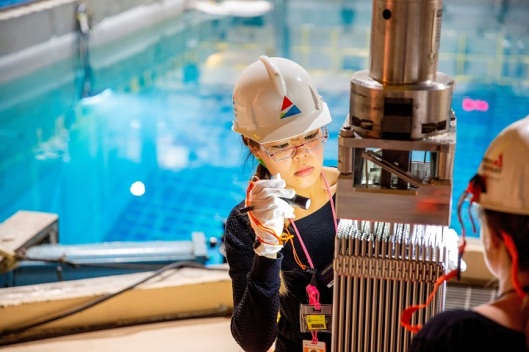
An engineer inspects a new PWR fuel assembly.
The EIA’s 2018 capacity factor for USA nuclear is 0.926. Nuclear fuel stays in the reactor producing power for about 5 years. Combine all that and you find that each PWR fuel assembly puts out about 227 GWh over its lifetime, and each BWR fuel assembly puts out about 75 GWh over its lifetime. Weighting those two outputs to the fraction of each fuel assembly type in the USA fleet yields an average nuclear fuel assembly output of 127 GWh over its lifetime.
Wow! Each wind turbine generates 10% more electricity than a fuel assembly, but needs 1000 times more material!
Sure, this is just an estimate. I’m not counting the huge amount of concrete involved in either technology, and yes, a reactor is a huge, thick metal cylinder that requires mining inputs, too. But over its 60 year lifetime, a nuclear power plant will spread those material costs between 8,000 assemblies for PWRs or 23,000 assemblies for BWRs. I’m sure there are other nuances, so please bring them up in the comments!
#FallInLoveWithU

